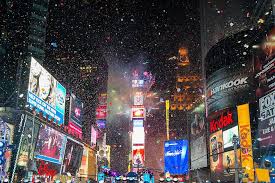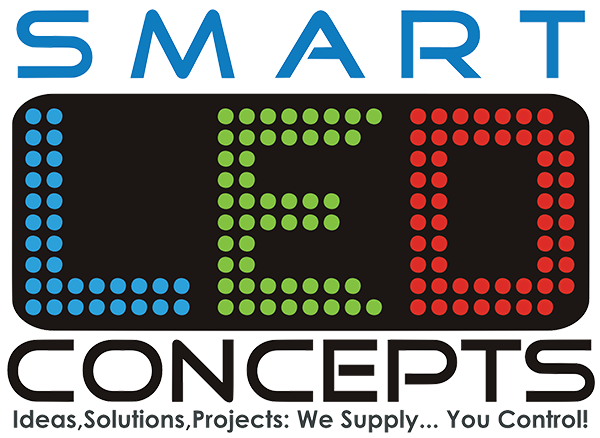How the Evolution of the Ball Dropping in New York Time Square is the Perfect Illustration of the History of LED Lights

Do you know the history of one of the most visited and famous city attractions in the world? I am embarrassed to say I did not. I have a great affection for New York City. I lived there during my 20s and I loved the city, the people and the craziness. As cities go New York holds a fascination for so many – bright lights, big city, what’s not to love?
Times Square – Brief History
Times Square is named after the New York Times newspaper. It seems obvious but I am sure if you are anything like me, you probably never gave a second thought to its origin. It reminds me of the origin of Baseballs World Series a lot people thought the name came from the World newspaper sponsoring the league – researching this article I discovered that this is not true https://www.rulesofsport.com/faq/why-is-the-world-series-called-the-world-series-if-only-american-teams-play.html
The New York Times moved its offices to 42 nd st and Broadway at the turn of the 19th century. many people thought that is was a foolish move as the majority of its readers were based downtown and in Brooklyn. However, the Times had foresight as the newly constructed Subway line would give them instant access to the markets that they looked to serve. Times Square was still far away from the action, they wanted to make their newly constructed building a centerpiece of the expanding NYC skyline and promote the paper.
Stroke of Genius Marketing
To get a crowd up to their building they decided to throw a New Year’s Eve party. At the time revelers celebrated the ringing in of the New Year downtown at Trinity Church. Success is often a byproduct of opportunity and timing crossing paths. The timing was perfect, the church elders wanted the party to be held elsewhere and the New York Times building was looking to promote itself. There were teething problems as the first few attempts were causing a lot of damage with fireworks reinging down on the large crowd below. To keep the party and protect the people they looked to the maritime tradition of dropping a ball to ring in the New Year.
Electricity
As with life throughout the modern world, the advent of electricity gave the new tradition of celebrating the new year at the Times building a whole new lease of life. Forging a ball from wood and steel and weighing a hefty 700 lbs the midnight New Year’s Eve ball was created. The ball contained 100 bulbs of 25 watts each and was lowered down by hand by technicians. Can you visualize how amazing this would have looked in 1907, the Times building was the tallest building in Manhatten and it had this lighted ball being lowered to ring in 1908.
World War Two
The tradition of dropping the ball in Times Square has only been stopped on two years 1942 and 1943. That year there was a voluntary blackout in effect. The reason for this was to not advertise the location to the German U boats that were lurking in the Atlantic. The party continued without the ball drop, bells were rung out to herald in the New Year, another great tradition.
The Ball 1907 – 1995
There have been 7 versions of the Times Square ball throughout the years, up until 1995 the ball was lowered by a crew of workers by hand using a rope and pulley system and a stopwatch to guide the ball down on an extended pole. From 1907 to 1920 the ball was made from wood and steel and weighed over 700 lbs. The wanted a lighter alternative and found this with an iron ball, it had the same amount of lights but weighed only 400 lbs. With the popularity of aluminum, they were able to decrease the weight and increase the number of lights from 100 to 180. If you are north of 40 you will remember this version clearly, when the ball dropped in 1984 the fashioned the ball into a big red apple, stem and all, for the I Love NYC campaign. This I will add, was another stroke of marketing genius.
The Ball 1995 – 2007
In 1995 the Times Square took a major leap forward to the modern age in lighting. Teaming up with Philips they used halogen lamps and modern control systems to move from a static look to a dynamic ball light. The “glitterball” was born, it had 10,000 rhinestones strobe lights and programmable halogen lamps. Like the apple in the 80s, the ‘glitterball’ became a symbol of the era in the city that never sleeps, it also ushered in the next step in lighting technology.
in the year 2000 – Y2k had everyone holding their breaths waiting for technology to send us back to the dark ages. New York would step up its game again. A new millennium was the perfect excuse to go a little crazy and design a ball that was made from the finest Waterford crystal and lights. This bad boy weighed in at over 1000 lbs and as people nervously waited for their toasters to turn on them a new millennia was born.
Advent of LEDs to the World Stage
How do you top a Waterford Crystal ball? This would have been very difficult to do if it wasn’t for the advent of LED technology. So for 100 ball drop in 2007, they decided to bring out the big guns and create a dynamic ball that would become a permanent feature in times square. The version that dropped on New Years’ Eve 2007 was upgraded in 2008. It is twice the size of the ball that originally dropped in 1907. The current ball is 12 ft in diameter, it weighs over 6 tonnes ( 11,875 lbs )
Evolution – The Amazing Numbers
The current ball is 12 ft in diameter, it weighs over 6 tonnes ( 11,875 lbs ). The new ball has 32,276 RGB LED lights. Do you remember the original had 100 Bulbs of 25 watts each? And the 1995 version has halogen bulbs? It is approximately 90 % more energy efficient than the its predecessors. Let that advancement sink in. We live in an age of endless possibilities. LED technology is at the forefront and at Smart LED Concepts we are proud to be part of this exciting and continuous evolution.
What we see today is a mirror of how far imagination and technology have come in a little over a century. From an innovative building in a horse and carriage market called Long Acre Square to Times Square that we know today. First, there was electricity followed by light now we have a 6-tonne ball of over 16 million interchangeable colors delighting people from every corner of the planet.
Check out https://www.timessquarenyc.org for greater information on Times Square
If you are planning an LED light install, use a licensed low voltage contractor like Smart LED Concepts. We deal with everything from complex overarching LED systems to quick installs and everything in between. Working with insured specialists will make sure your project goes to plan.

- Cut energy consumption up to 80%
- Provide a brighter / higher quality light
- Cut down maintenance Costs
- Expected ROI between (1.5 – 3 years)
- 5 Year Warranty
Want to attract more business?
Smart LED Concepts will work with your contractors and designers to create and illuminate custom lighting that will make your business shine.
Because Smart LED Concepts used LED fixtures in the venue, the running and maintenance cost is 70% less than venues that use traditional lighting methods.
Categories: Blog, Business, Commercial LED, Commercial Lighting, Electric, going green, Restaurant LightingDecember 18, 2018Share this post
Related posts
A Guide to Great Landscaping Lighting
September 30, 2019LED Lighting Design Tips.
September 27, 2019Exterior LED Lights for Hotels
September 27, 2019Let’s talk about Flex…
September 24, 2019LED vs CFL
September 23, 2019Value Engineering & LED Lights
September 20, 2019NEWS & EVENTS
- A Guide to Great Landscaping Lighting
September 30, 2019 - LED Lighting Design Tips.
September 27, 2019 - Exterior LED Lights for Hotels
September 27, 2019 - Let’s talk about Flex…
September 24, 2019
Categories: Blog, Business, Commercial LED, Commercial Lighting, Electric, LED Commercial lighting, LED Concepts, LED Design Products, LED DESIGNS, LED DISPLAYS, LED Lighting, Lighting, NEWS, Portfolio, Products, Residential, Restaurant Lighting, UncategorizedOctober 11,




Thanks for sharing this good post. Very inspiring! (as always, btw)